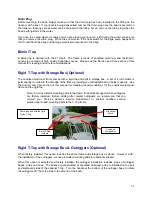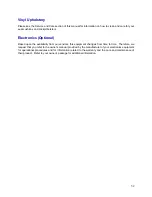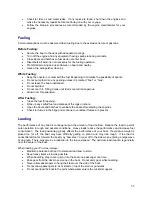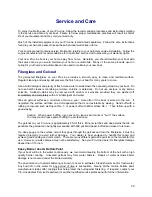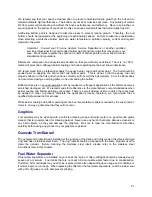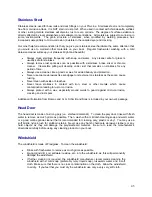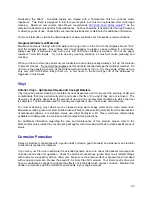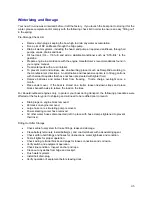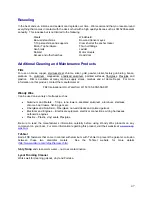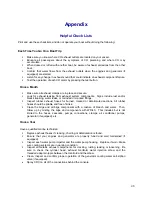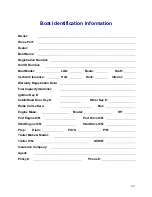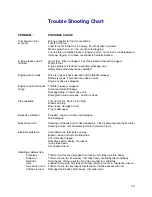
41
We recommend that your boat be cleaned often to prevent unwanted marine growth on the hull and to
maintain ultimate high performance. The bottom of your boat must be kept clean. Any buildup of marine
life from water will create drag and affect the boat’s performance and efficiency. Never use brushes or
scouring pads on the bottom of your boat, as this can cause small scratches that will actually trap dirt.
Antifouling bottom paint is designed to dissolve slowly to prevent marine growth. Therefore, the hull
bottom should be repainted at the beginning of each boating season. Factors to take into consideration
when selecting a protective bottom paint are water temperature, pollution, salinity, current and organic
material in the water.
Important: Consult your Pro-Line dealer’s Service Department or another qualified
service professional for recommended bottom paints and local laws that may govern your
area. Many states regulate the chemical content of bottom paints to meet environmental
standards and regulations.
Blisters are unforeseen and unexplained phenomen
a
that are relatively undefined. There is no 100%
method of prevention, although barrier coating and bottom painting
are
the best known deterrent
s
.
We recommend that a professional apply the epoxy barrier coat and bottom paint. The hull should be
sanded prior to applying the barrier coat and bottom paint. This is done so that the epoxy coat will
properly adhere to the hull, and when done correctly, will not void the hull warranty. Pro-Line Boats does
not recommend using an etching primer in lieu of sanding the bottom.
Bottom painting is an annual operation but may require more frequent applications if the bottom becomes
scratched, damaged, etc. We recommend strict adherence to the manufacturer's recommendations when
barrier coating and bottom painting your vessel. There is a small window of time in which the coats must
be applied in order to properly complete the application process; therefore, we recommend that a
qualified professional do this process.
While barrier coating and bottom painting are the best preventative to blisters caused by the environment,
this is in no way a guarantee that they will not occur.
Graphics
Your graphics may be cleaned with a mild dish cleaning soap and warm water or a good marine grade
cleaner that is recommended for cleaning gelcoat. Never use any harsh chemicals, abrasive cleaners or
any hard objects, as they will damage the graphics. Be sure to read the manufacturer’s directions
carefully before using any product on your graphics or gelcoat.
Gunwale Trim/Rubrail
The gunwale trim/rubrail that is installed at the juncture of the deck and hull is made of flexible, semi-rigid
vinyl and has a stainless steel insert. The vinyl rubrail should be cleaned with the same products used to
clean the gelcoat. Before cleaning the stainless steel insert, please refer to the stainless steel
instructions later in this chapter.
Fuel Water Separator
I
f fuel water separators are installed on your boat, the “spin on” filter cartridges should be renewed every
season at a minimum. Fuel tanks that are not kept full accumulate water faster due to condensation.
Therefore, filter cartridges may need to be replaced more often depending upon usage and conditions or
if motors begin to run rough. When replacing the filters for the fuel water separators, coat the rubber seal
with a film of grease or oil to help prevent sticking.





